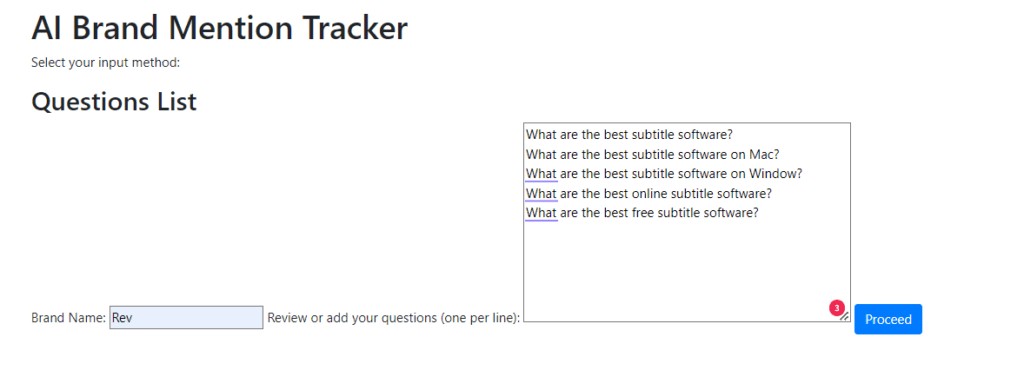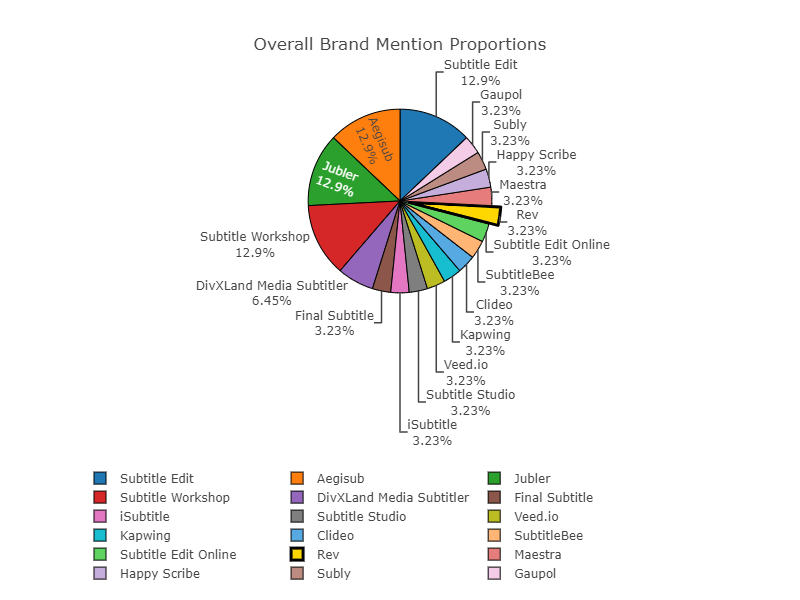Generative AI is the new way prospective clients look for great products and services.
Tools like ChatGPT or Google Bard act like helpful agents, clarifying their users’ projects and needs, and suggesting personalized solutions.
As they understand their users better, they will become a vital part of the buyer’s journey. They will also become a key marketing channel to make your brand known to a wide audience.
Like Google’s Search was in the golden days of the Internet.
Here’s how to ensure you’re visible on AI chats.
Why should you rank on Generative AIs as a marketer?

Generative AIs attract billions of users every month. ChatGPT alone currently represents 1.3 billion monthly users (according to September 2023 stats).
There’s a good reason for that. Since Google Search, there have never been online tools providing so much value to users.
You want to get advice about your student mortgage? You want to fix your kitchen sink? Or just want some recommendations for your business project?
Chatbots like ChatGPT guide you through the specifics of your problem thanks to the universal human knowledge they collect online. They help you identify your needs and give you step-by-step recommendations. Just like a human coach or advisor do -but for free.
Here’s the most interesting part: they recommend users about products and services tailored to their needs. This makes Generative AIs great qualifiers of leads.
As such, you can expect many marketing benefits from being visible in AI’s conversations :
- Generating free impressions for your brand and product: AIs cite many brands and product names throughout their responses.
- Attracting qualified leads to your website: AIs guide users through their buyer journey and recommend your brand when they are mature enough.
- Retaining and building the loyalty of existing customers: AIs are great at educating users on the products they use.
You want to leverage the almost infinite pool of potential clients and make your brand appear in AI’s conversations?
What are the factors that make you rank on Generative AIs?
Generative AIs are designed to provide the most probable response to any query. They are high-scale semantic prediction machines. And to do that, they rely on factors close to the ones of search engine algorithms :
- Topical authority: does your brand name frequently appear in conversations related to your product/service category? Do you publish content that makes you relevant in these topics? Are you regularly influencing the trends in your market?
- Popularity: are you a renowned company in your niche? Do you have a lot of website visitors, social media followers, or buyer community?
- Reputation: can users trust you? Do you have numerous positive reviews and testimonials?
Based on these factors, ChatGPT or Bard decide whether to recommend your brand. And these factors help them ensure that you are a well-established name in your industry.
How to ensure you rank your brand on Generative AIs?
Contrary to search engines, AI chats take time to update their data. They slowly roll out new changes to their core algorithm. ChatGPT for example is relying on a data training set dating back to April 2023. That makes it hard to trick the algorithm into promoting your brand more.
However, you can start by analyzing and measuring your brand visibility on AI conversation. This will give you an accurate view of which marketing actions you can do later – when generative AIs dataset will update more frequently. Here are 4 steps you can take :
1. Start with your list of keywords

AI users don’t behave in the same ways as search engines’ users. For one, AI users don’t type specific keywords to search for information. They simply describe their situation to the AI, ask it for help in natural language, and continue the conversation until they are satisfied.
For example, they might tell it that they have received hundreds of applications and want a sure way to filter them and find the best fit.
How would it be possible to track all these long-tail queries? Seems like an impossible task for marketers!
Fortunately, users regularly come up with similar problems and inquiries. In the case of the HR sector, everyone wonders about how to hire the right talent, negotiate wages, or engage their existing employees. This means you can aggregate conversations and queries together when they talk about the same related topic.
As AI companies don’t provide you with a user query analyzer yet, how can you do that? By relying on the user’s existing queries on search engines and on the questions they ask on search engines. Typed questions are a good approximation of what users are looking for on AIs.
For example, for a company selling a subtitling solution, the questions look like this:
“What is the best subtitling software on Mac?”
“What are the best subtitling software on Window?”
“What are the best free subtitling solutions?”
To find these questions, you can rely on a well-established marketing tool: your keyword list.
For each keyword on your list, you can check the questions from the “People also ask” section on the Google SERP. It will be a good place to start building a list of common questions and queries that potential customers might type.
So grab your list of keywords and gather your list of key questions.
2. Measure the mention rate per question

AIs like ChatGPT or Bard are made to recommend products/services, because they are made to help users out. They want to guide them through their projects, and so they give them the right tools to achieve their goals.
That’s also why it’s important as a marketer to know whether your brand is recommended by Generative AIs. And you can do that by relying on your key questions.
You can run each of these questions on your AI, identify each brand mentioned, and count the number of times they are quoted. You can then determine your overall citation rate on your key questions.
Mention rate = number of your brand’s mentions/number of all the brand mentions on your topic/question.
This mention rate is a good representation of your visibility on AI chats. It also demonstrates the “market share” your brand owns in the eyes of AI, compared to the main competitors on your product/service-related topics.
It gives you a way to assess the current impact of your marketing actions on AI recommendations, and on which topics and questions you might need to optimize your branding.
3. Optimize your visibility per topic
Now you know on which topic AIs recommend you more, and on which they recommend you less. How to increase your visibility on specific topics within AI chats?
You can launch a variety of marketing actions :
- Producing content around specific key questions to enhance your brand profile and expertise. AIs train on this content to improve their understanding and relevance.
- Launching influence marketing and UGC campaigns around these topics.
- Monitoring reviews and word of mouth. AIs give more importance to a brand that is mentioned by a lot of different people.
- Refining your brand wording to fit into these key questions. AIs rely on your own marketing material to define and understand your offering.
Measure the citation rate per topic: our ChatGPT brand mentions analyzer

We are developing a brand mention analyzer that can help you :
- Turn your list of keywords into a list of key questions typed by AI users.
- Measure the mention rate of your brand per key question.
- Know where your brand stands compared to your competitors, and on which topics focus your marketing efforts.
You want to track and measure your brand visibility on AI chats? Join our newsletter to stay updated.






